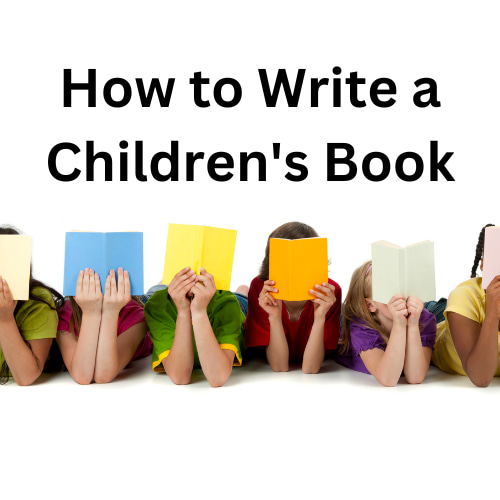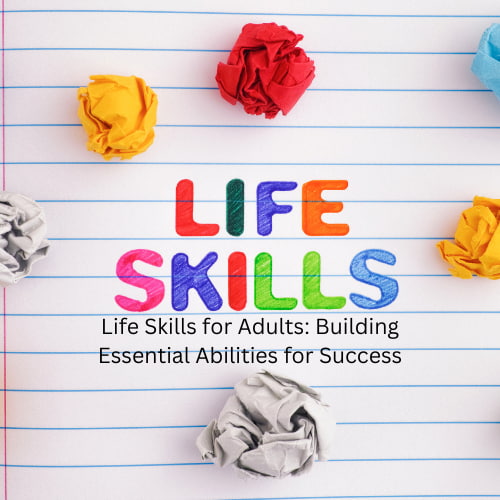How to Write a Children’s Book
Are you wondering how to create a children’s book? Children’s books have gained immense popularity in recent years, thanks to the widespread use of digital devices and the increasing interest in reading among young minds.
This post may contain affiliate links, I earn from qualifying purchases at no extra cost to you. Click here for my disclosure policy
There are many ways to create a children’s book and one of the fastest and easiest ways is through an eBook. Creating a children’s book with an online book maker by Vista Create can be a fulfilling and rewarding experience, as it allows you to share imaginative stories, educational content, or engaging illustrations with young readers around the world.
You can find examples of some of the eBooks I’ve made over here on my shop page
Do you have a unique idea for a book that you want to develop into your own product? Are you passionate about creating content for kids and want to make a digital book for them? Then you’re in the right place. In this comprehensive guide, we will take you through the step-by-step process of creating a captivating and interactive children’s Book.

How to Write a Children’s Book
Table of Contents
- 1 How to Write a Children’s Book
- 2 What are the first steps to writing a children’s book? What does it take to write a children’s book?
- 2.1 Step 1: Define Your Target Audience and Genre
- 2.2 Step 2: Craft an Engaging Storyline
- 2.3 Step 3: Develop Interactive Elements
- 2.4 Step 4: Illustrate the Book
- 2.5 Step 5: Choose the Right Book Format
- 2.6 Step 6: Book Layout and Design
- 2.7 Step 7: Test Your Book
- 2.8 Step 8: Publish and Distribute
- 2.9 Step 9: Promote Your Book
- 2.10 Step 10: Monitor and Update
- 3 Other Key points to consider while writing your children’s book:
- 4 Related Information:
- 5 How to Create a Children’s Book Q & A
- 6 How to Create a Children’s Book Conclusion
What are the first steps to writing a children’s book? What does it take to write a children’s book?
Step 1: Define Your Target Audience and Genre
The first step in creating a children’s book is to identify your target audience and determine the genre of your book. Consider the age group you want to cater to (e.g., toddlers, preschoolers, early readers, etc.) and the type of content you wish to present (e.g., picture books, educational stories, fantasy adventures, etc.).
Step 2: Craft an Engaging Storyline
If your book will be a narrative-driven story, take time to craft an engaging storyline that will captivate young readers. Ensure that the plot is age-appropriate, relatable, and holds their interest throughout. Incorporate elements of wonder, humor, and moral lessons to make the story memorable. Keep your language simple according to the reader’s level.
Step 3: Develop Interactive Elements
One of the advantages of creating a digital children’s book is the ability to include interactive elements. Consider incorporating animations, sound effects, touch interactions, and mini-games that complement the narrative and enhance the reading experience.
Step 4: Illustrate the Book
Vibrant and visually appealing illustrations are crucial for children’s books. Include colorful illustrations to keep the reader’s attention and help them keep up with the story. If you’re an illustrator, create original artwork that complements the text and adds visual appeal to the story. If you’re not an illustrator, consider hiring a professional or using stock illustrations that match your vision.
Step 5: Choose the Right Book Format
Selecting the appropriate format is essential to ensure compatibility with various devices and platforms. Common book formats for any type of book include EPUB and PDF. EPUB is widely supported and allows for reflowable text and interactive features, which makes it an excellent choice for most children’s books.
Step 6: Book Layout and Design
Pay close attention to the layout and design of your book. Ensure that the text is easy to read, and the illustrations are well-integrated into the overall design. Use child-friendly fonts and consider adding bold or colorful text formatting for emphasis.
Step 7: Test Your Book
Before publishing your book, thoroughly test it on different devices to ensure that all interactive elements function correctly, and the layout appears as intended. Consider seeking feedback from parents, teachers, or kids to gather valuable insights.
Step 8: Publish and Distribute
With your book ready, it’s time to publish and distribute it. There are various platforms where you can self-publish your children’s book, such as Amazon Kindle Direct Publishing (KDP), Apple Books, Google Play Books, and more. Ensure that you follow the guidelines and formatting requirements of your chosen platform.
Step 9: Promote Your Book
Promotion is crucial to reach your target audience and increase visibility for your children’s book. Utilize social media, create a website or blog, collaborate with parenting or book review bloggers, and participate in relevant book fairs or events.
Step 10: Monitor and Update
Keep track of the performance of your book and gather feedback from readers. Regularly update your book to fix any issues and incorporate new features or content based on feedback.
Shop any of these stores and I receive a small commission at no cost to you.
 Children Who Dance in the R...Shop on Amazon
Children Who Dance in the R...Shop on Amazon Hot Dog: (Winner of the 202...Shop on Amazon
Hot Dog: (Winner of the 202...Shop on Amazon The Two of Us Belong Togeth...Shop on Amazon
The Two of Us Belong Togeth...Shop on Amazon There Is No One Like You: A...Shop on Amazon
There Is No One Like You: A...Shop on Amazon Patrick Picklebottom and th...Shop on Amazon
Patrick Picklebottom and th...Shop on Amazon

Other Key points to consider while writing your children’s book:
Creating a Relatable Main Character: A key aspect of a great children’s book is the main character. The protagonist serves as a relatable guide for young readers, leading them through exciting adventures or valuable life lessons. Ensure that your main character is well-developed and embodies qualities that resonate with your target audience. This connection helps children become emotionally invested in the story and creates a memorable reading experience.
Consider Word Count and Vocabulary: The word count and vocabulary in a children’s eBook play a vital role in maintaining engagement. Tailor your word count to the age group you’re targeting – shorter for toddlers and longer for middle-grade books. Choose vocabulary appropriate for your readers’ comprehension level, introducing new words gently while providing context to expand their language skills.
Exploring Different Book Formats: Children’s eBooks span various formats, from picture books for early readers to chapter books for more advanced ones. Depending on your audience’s age and reading level, you can experiment with different formats to cater to their needs and preferences, ensuring that your content is both enjoyable and challenging.
Infusing Entertainment and Rhyme: To craft a great children’s book, infuse entertainment and rhyme into your writing. Kids love stories that captivate their imagination and feature rhythmic patterns. Whether you’re writing a whimsical picture book or an adventurous chapter book, incorporating elements of rhyme and playfulness can make the reading experience joyful and memorable.
Navigating the Writing Process: Writing children’s books requires a unique blend of creativity and inspiration. As you develop your book idea, consider the age-appropriate themes and topics that will resonate with your young audience. Draw inspiration from your own childhood experiences, observations, or imaginative scenarios to create stories that kids will cherish.
Choosing the Right Perspective and Tense: The choice of perspective and tense can significantly impact how your story unfolds. Consider whether a first-person or third-person narrative suits your book better. Additionally, the use of present tense can create an immersive reading experience, making young readers feel like they are right there with the characters as the events unfold.
Self-Editing and Perfecting Your Manuscript: After completing your first draft, embark on the process of self-editing. Pay attention to clarity, pacing, and language usage. This stage allows you to refine your storyline, ensure that interactive elements function seamlessly, and polish the overall quality of your children’s eBook before proceeding to publication.
Choosing the Publishing Route: When it comes to publishing your children’s eBook, consider the most suitable route for your goals. You can explore traditional publishing, self-publishing through platforms like Amazon KDP, or hybrid options. Each route has its advantages, and understanding the nuances can help you make an informed decision that aligns with your vision.
Illustrations that Enhance the Story: A skilled children’s book illustrator can bring your story to life through captivating visuals. Collaborate with an illustrator who understands your narrative and can create illustrations that complement your text seamlessly. The combination of engaging visuals and a compelling storyline will leave a lasting impact on young readers.
Diverse Topics for Children’s eBooks: Children’s eBooks cover a wide range of topics, from imaginative adventures to educational explorations. Consider exploring diverse themes such as historical fiction, non-fiction topics, or stories that highlight different cultures and experiences. Providing varied content ensures that your eBook appeals to a broader audience and enriches children’s reading experiences.
Related Information:
If you’re looking for other ways to generate income through writing or creating, you can create printables with ideas like planners, coloring books, checklists, plans, and more. You can check out some of the items I’ve created on my pages:

How to Create a Children’s Book Q & A
What is the main difference between books and eBooks?
The main difference between books (printed books or physical books) and eBooks (electronic books) lies in their format and the way they are read and accessed. Here are the key distinctions:
- Format:
- Books (Printed Books): Books are physical objects made of paper, with ink-printed text and images. They come in various sizes, designs, and formats, such as hardcover, paperback, and board books.
- eBooks (Electronic Books): eBooks are digital files that can be read on electronic devices like e-readers (e.g., Kindle), tablets, smartphones, or computers. They are typically formatted as documents that can be displayed on screens.
- Access and Distribution:
- Books: Printed books are distributed through physical bookstores, libraries, online retailers, and other channels. Readers purchase or borrow physical copies.
- eBooks: eBooks are purchased and downloaded from online platforms or retailers that specialize in digital content. They can be instantly accessed and downloaded after purchase.
- Portability and Storage:
- Books: Physical books need to be carried and stored in a physical space. They may take up more room, especially if you have a large collection.
- eBooks: Multiple eBooks can be stored on a single device, reducing the need for physical storage space. This makes them highly portable, allowing readers to carry an entire library in a single device.
- Reading Experience:
- Books: Reading a physical book provides a tactile and sensory experience. Readers can physically flip through pages, feel the paper, and interact with the book in a traditional manner.
- eBooks: eBooks offer customizable reading experiences. Readers can adjust font sizes, choose different fonts, and sometimes even change background colors for comfortable reading. E-readers often use e-ink technology that mimics the appearance of ink on paper.
- Interactivity and Multimedia:
- Books: Traditional books are primarily text and static images. They do not typically include multimedia elements.
- eBooks: Some eBooks, especially those designed for tablets or multimedia-capable devices, may include interactive features, animations, videos, and audio elements.
- Environmental Impact:
- Books: The production of physical books involves the use of paper, ink, and transportation, which can contribute to environmental impacts.
- eBooks: eBooks are considered more environmentally friendly as they eliminate the need for paper and physical transportation.
- Cost:
- Books: Printed books have production and distribution costs associated with their physical format.
- eBooks: eBooks can sometimes be more cost-effective to produce and distribute, which can lead to lower prices for readers.
It’s important to note that both formats have their own advantages and disadvantages. Some readers prefer the tactile experience of physical books, while others enjoy the convenience and portability of eBooks. The choice between the two often comes down to personal preferences, reading habits, and the type of content being read.
The amount an author makes from a children’s book can vary widely based on several factors, including the publisher, the author’s experience and reputation, the book’s potential market, and the terms of the publishing contract. Here are some general points to consider:
- Advance: Many authors receive an advance against royalties when they sign a publishing deal. This is an upfront payment that is typically paid in installments. The size of the advance can vary greatly and depends on the factors mentioned above.
- Royalties: Authors typically earn royalties on each copy of the book sold. Royalty rates are usually specified in the publishing contract and can be a percentage of the book’s cover price (often around 5% to 10%) or a percentage of the publisher’s net receipts (usually around 25% to 50%). Royalties might also vary based on the format of the book (hardcover, paperback, e-book, etc.).
- Sales and Marketing: The success of a children’s book is influenced by its marketing and promotion efforts. More established authors might benefit from more extensive marketing campaigns, which can lead to higher sales and, consequently, higher earnings.
- Series and Sequels: If the children’s book is part of a series or has sequels, the author’s potential earnings can increase as readers continue to buy subsequent books.
- Subrights: Authors can also earn money from subrights, such as foreign rights (sales of the book to publishers in other countries), audio rights, film/TV rights, merchandise rights, etc. These can provide additional income beyond book sales.
- Self-Publishing: If an author chooses to self-publish a children’s book, they have more control over pricing and royalties. However, they are also responsible for the costs of production, marketing, and distribution.
- Varied Success: It’s important to note that not all children’s books become bestsellers. Some might have limited sales, impacting the author’s overall earnings.
Is it hard to get a children’s book published?
Yes, getting a children’s book published can be a challenging process. The children’s book market is competitive, and publishers receive a large number of submissions regularly. Here are some reasons why it can be challenging:
- High Demand and Limited Slots: Publishers receive numerous submissions for children’s books, but they only have a limited number of slots available for new titles. They often seek unique and standout stories that will resonate with their target audience.
- Quality Expectations: Children’s books require a high level of quality in writing and illustrations. The content must be engaging, age-appropriate, and well-crafted. Publishers are selective to ensure that the books they publish meet these standards.
- Market Trends: The children’s book market is influenced by trends and preferences that can change over time. Publishers may be looking for specific themes or styles that align with current market demands.
- Illustrations: For picture books and early reader books, illustrations are a crucial component. Finding the right illustrator who can bring the story to life is an important consideration for publishers.
- Platform and Promotion: Publishers often consider an author’s platform and ability to promote the book. Having a strong online presence or connections in the industry can be advantageous.
- Persistence: Rejections are common in the publishing industry, and authors may need to submit their work to multiple publishers before finding the right fit. Persistence is key to navigating the submission process.
- Writing for the Target Audience: Writing for children requires a deep understanding of the target age group’s interests, reading levels, and developmental stages. Crafting a story that resonates with young readers while also appealing to parents and educators can be challenging.
Despite the challenges, many children’s books are successfully published each year. Authors who are determined, open to revisions, and willing to learn about the publishing industry can increase their chances of success. Some authors also choose to explore self-publishing or digital platforms as alternative routes to getting their children’s books into the hands of young readers.
What are 5 rules that you should follow when creating a children’s book?
Creating a successful children’s book involves a combination of creativity, storytelling, and understanding your target audience. Here are five rules to consider when creating a children’s book:
- Know Your Audience: Understand the age group you’re writing for. Children’s books are categorized into different age ranges, such as board books for infants, picture books for preschoolers, early readers for emerging readers, and middle-grade or young adult books for older children. Each age group has specific interests, reading levels, and developmental considerations. Tailor your story, language, and themes accordingly.
- Engaging and Memorable Characters: Create relatable and memorable characters that children can connect with. Characters should have distinct personalities, emotions, and motivations. Consider what challenges or goals your characters will face, and how their journey will resonate with young readers.
- Compelling Storytelling: Craft a compelling and age-appropriate story. Children’s books often have simple yet impactful narratives with clear beginnings, middles, and satisfying endings. Incorporate elements of tension, humor, and emotion to keep young readers engaged. Use age-appropriate language and avoid talking down to your audience.
- Illustrations Matter: If your children’s book includes illustrations, they play a crucial role in conveying the story and capturing the attention of young readers. Work closely with an illustrator (or provide your own illustrations if you’re capable) to ensure the visuals align with the narrative and enhance the reading experience.
- Themes and Lessons: Children’s books often convey important themes or life lessons in a subtle and relatable manner. Consider the message you want to convey, whether it’s about friendship, empathy, perseverance, or self-discovery. However, avoid being overly didactic or preachy—let the story’s natural flow carry the lesson.
Bonus Tip: 6. Read Aloud-Friendly: Children’s books are often read aloud by parents, teachers, or caregivers. Keep this in mind when crafting your story. Use rhythmic language, repetition, and onomatopoeia to make the text engaging and enjoyable to read aloud. Consider the pacing of the story to maintain a lively and interactive reading experience.
How do I get my first children’s book published?
Getting your first children’s book published requires a combination of writing skills, perseverance, and knowledge about the publishing industry. Here’s a step-by-step guide to help you navigate the process:
- Write and Revise Your Manuscript: Start by writing a compelling and age-appropriate children’s book manuscript. Revise and edit it multiple times to ensure the writing is polished and engaging. Consider seeking feedback from critique partners, writing groups, or beta readers.
- Research the Market: Familiarize yourself with the current children’s book market. Read recently published children’s books in your genre and age group to understand trends, styles, and what’s resonating with young readers.
- Identify Your Target Audience: Determine the specific age group your book is meant for (e.g., picture book, middle-grade, young adult). Understanding your target audience helps you tailor your story and pitch to the right publishers.
- Write a Query Letter and Book Proposal: Create a professional and engaging query letter that introduces your book, provides a brief synopsis, and highlights your writing credentials. Some publishers also require a book proposal, which includes additional information about your book, target audience, and marketing ideas.
- Research Publishers and Agents: Research publishers that specialize in children’s books and accept submissions in your genre and age group. Consider creating a list of potential publishers and literary agents who might be interested in your work. Look up their submission guidelines on their websites.
- Submit Your Manuscript: Follow each publisher’s submission guidelines carefully. Some may require electronic submissions, while others prefer printed materials. Attach your query letter, book proposal (if required), and a sample of your manuscript as per their guidelines.
- Prepare for Rejections: Rejections are common in the publishing industry, even for established authors. Don’t be discouraged by rejection letters. Use feedback to improve your manuscript and continue submitting to other publishers.
- Consider Literary Agents: While not mandatory, having a literary agent can increase your chances of getting published. Agents have industry contacts and can help negotiate favorable contracts. Research agents who represent children’s book authors and follow their submission guidelines.
- Self-Publishing: If traditional publishing proves challenging, you might consider self-publishing your children’s book. Self-publishing allows you to maintain creative control and publish your book on platforms like Amazon Kindle Direct Publishing (KDP) or other self-publishing services.
- Build Your Author Platform: Publishers appreciate authors who have an online presence and can contribute to the marketing of their books. Consider creating a website, blog, or social media profiles to connect with potential readers.
- Attend Writing Conferences and Workshops: Participating in writing conferences and workshops can help you learn more about the industry, connect with other authors, and gain insights from publishing professionals.
- Stay Persistent: Publishing a book takes time and persistence. Don’t give up. Keep honing your craft, revising your manuscript, and submitting to publishers and agents.
Remember that the publishing journey can vary greatly for each author. What matters most is your dedication to your craft and your willingness to learn and adapt along the way.

How to Create a Children’s Book Conclusion
Creating a children’s book is a fantastic way to share your creativity and imagination with young readers. By crafting engaging stories, incorporating interactive elements, and presenting captivating illustrations, you can create an electronic book that leaves a lasting impact on children’s minds.
Remember to choose the right format, design the layout thoughtfully, and promote your book effectively to reach a wider audience. So, embark on this exciting journey of creating a children’s book and inspire the next generation of readers!








